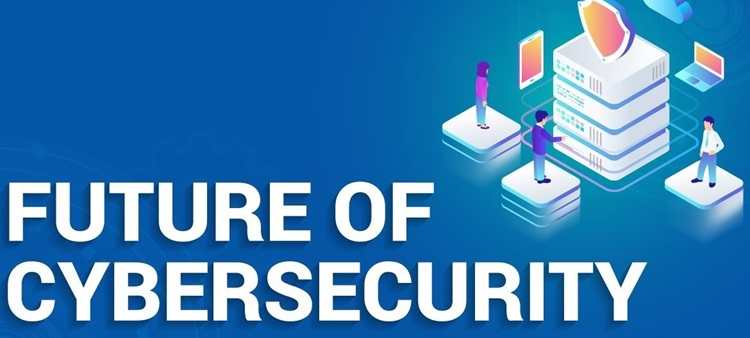As the digital landscape evolves, cybersecurity has become a paramount concern for organizations worldwide. The increasing sophistication of cyber threats demands innovative solutions and strategies. We delve into the insights from leading Infosec security administrators to explore the future of cybersecurity and the measures necessary to safeguard our digital future.
The Rising Complexity of Cyber Threats
Cyber threats are becoming more complex and diverse. From ransomware attacks to advanced persistent threats (APTs), the methods used by cybercriminals are continually evolving. Security administrators emphasize the importance of staying ahead of these threats by leveraging advanced technologies such as artificial intelligence (AI) and machine learning (ML). These technologies can detect anomalies and potential threats in real-time, allowing for proactive measures.
The Role of AI and Machine Learning in Cybersecurity
AI and ML are revolutionizing cybersecurity. By analyzing vast amounts of data, these technologies can identify patterns and predict potential security breaches. Leading Infosec administrators highlight several key applications:
- Threat Detection and Response: AI-driven systems can identify unusual behavior and trigger automated responses to mitigate threats.
- Fraud Prevention: ML algorithms can detect fraudulent activities by analyzing transaction patterns and user behavior.
- Incident Response Automation: AI can streamline incident response processes, reducing the time taken to address and neutralize threats.
The Importance of Zero Trust Architecture
A fundamental shift in cybersecurity strategy is the adoption of Zero Trust Architecture. This approach operates on the principle that no entity, inside or outside the network, should be trusted by default. Verification is required for all access requests. Infosec leaders advocate for Zero Trust to enhance security posture:
- Continuous Verification: Regularly verifying the identity and integrity of devices and users minimizes the risk of breaches.
- Micro-Segmentation: Dividing the network into smaller segments helps contain breaches and limit lateral movement of attackers.
- Least Privilege Access: Granting minimal necessary access reduces potential attack vectors.
Implementing Zero Trust in Your Organization
Transitioning to a Zero Trust model requires a strategic approach:
- Assess Your Current Security Posture: Identify vulnerabilities and areas needing improvement.
- Adopt Multi-Factor Authentication (MFA): Implement MFA to strengthen access controls.
- Encrypt Data: Ensure that all data, both in transit and at rest, is encrypted to protect sensitive information.
- Regular Audits and Monitoring: Continuously monitor network activity and conduct regular security audits to identify and mitigate risks.
The Human Element in Cybersecurity
While technology is crucial, the human element remains a critical factor in cybersecurity. Security administrators stress the importance of:
- Training and Awareness: Regular training programs ensure that employees are aware of the latest threats and best practices for security.
- Insider Threat Management: Monitoring and managing insider threats is essential, as employees can unintentionally or maliciously cause breaches.
- Strong Leadership: Effective cybersecurity leadership fosters a culture of security within the organization.
Building a Cybersecurity Culture
Creating a robust cybersecurity culture involves:
- Education: Providing continuous education on cybersecurity threats and response techniques.
- Communication: Encouraging open communication about security concerns and incidents.
- Accountability: Establishing clear policies and holding individuals accountable for following security protocols.
The Role of Regulatory Compliance
Adhering to regulatory standards is vital for maintaining cybersecurity. Security administrators emphasize compliance with frameworks such as:
- General Data Protection Regulation (GDPR): Ensuring data privacy and protection for EU citizens.
- Health Insurance Portability and Accountability Act (HIPAA): Protecting sensitive health information.
- Payment Card Industry Data Security Standard (PCI DSS): Securing credit card transactions.
Achieving and Maintaining Compliance
To stay compliant:
- Understand Requirements: Familiarize yourself with the relevant regulations and their requirements.
- Implement Policies: Develop and enforce policies that align with regulatory standards.
- Regular Assessments: Conduct regular assessments and audits to ensure ongoing compliance.
- Stay Updated: Keep abreast of changes in regulations and update practices accordingly.
Emerging Technologies and Their Impact on Cybersecurity
Several emerging technologies are poised to shape the future of cybersecurity:
- Blockchain: Offers enhanced security through decentralized and tamper-proof transaction records.
- Quantum Computing: While it poses risks to current encryption methods, it also promises new, more secure encryption techniques.
- Internet of Things (IoT) Security: With the proliferation of IoT devices, securing these endpoints is increasingly critical.
Preparing for the Future
Organizations must prepare for these technological advancements by:
- Investing in Research and Development: Stay ahead by investing in the research and development of new security technologies.
- Collaborating with Industry Peers: Share knowledge and strategies with other organizations to enhance collective security.
- Adapting to Change: Be flexible and ready to adapt security strategies as new technologies emerge.
Conclusion
The future of cybersecurity lies in a multifaceted approach that combines advanced technologies, robust strategies, and a strong focus on the human element. By staying ahead of emerging threats and continuously improving security measures, organizations can protect their digital assets and ensure a secure future.





0 comments:
Post a Comment